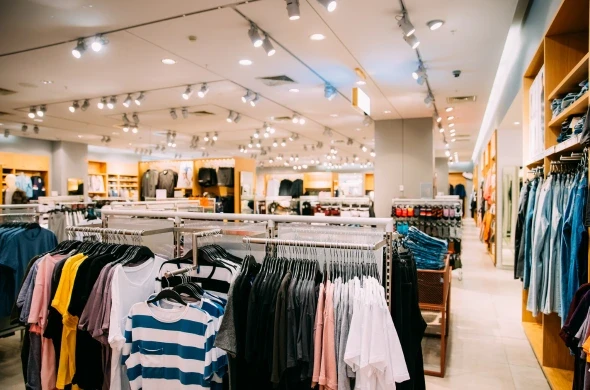One of the most critical aspects of the retail business is providing customers with a satisfying and seamless shopping experience. A key component to this experience is wayfinding, allowing customers to navigate your store or location with ease.
Customers struggling to find their way through your store are more likely to feel frustrated, anxious, or even disappointed. These emotions can lead to decreased product evaluations or lower overall customer satisfaction. You don't want your customers feeling frustrated or anxious when navigating through your store.
Principles of an effective wayfinding strategy (In-store & Digital)
The tenets of wayfinding apply to physical stores and digital spaces. You can ensure customers can navigate your digital space with just as much ease as if they were in your actual store. Here are some principles to guide you:
Visibility
Customers are unable to find items that are not visible at first glance. They shouldn't have to struggle to find a particular product. For example, display windows and digital menu boards should be within the view of customers and have clearly labeled information about product categories and departments.
Use the correct type of signage to help your customers quickly find what they need without having to make unnecessary stops or turn around unnecessarily in your store.
Decision points
Consumers' choices while shopping affects their path's flow through the store. While some shoppers prefer to go in a particular order (for example, grab a drink before heading over to grab food), others like to wander and choose the products they please. Either way, customers should always know where they are and where they're going.
Make sure you mark what products belong in each department. By marking your store, shoppers can choose their paths and easily find items they may have been looking for along their way.
In addition, it is important to identify your target customer personas and design a wayfinding strategy that aligns with their touchpoints.
Lighting
Poor lighting can cause people to feel uneasy. It is critical for the interior design of your store to be well lit 'or for you to utilize lamps and lights with adjustable brightness levels. Light fixtures are also a great way to map out your different departments. A well-lit store allows customers to see the products you are supplying better.
Orientation
Good orientation means knowing which way you are facing to navigate your surroundings effectively. In a store, this means having clear shelves and product labels that show customers which way they should be facing to find the product they're looking for.
It also means seeing the marked directions on where to find each department. This attitude also applies in digital environments, like your search features, pointers, popups, notifications & triggers, among others. Make sure the content you're providing your customers is straightforward to understand.
Usability
The space should have a clear journey and be easy to navigate, have marked entrances and exits, and facilitate beneficial experiences to the end-user. The building should create an immersive experience for its users by increasing comfort and customers satisfaction. For instance, it must not be too hot or cold in humid environments like retail stores. It also should provide visual cues of what's to come, a clear path of where people should go through using signs.
Consistency
The wayfinding strategy should be consistent throughout the environment. Using different ways of navigation to varying parts of the environment can confuse users, defeating the purpose of building a space that is easy to navigate.
The standard room is usually where several people might enter within the same time and have very similar goals. In retail environments, these standard rooms are generally at entrances and exits of the store. A good wayfinding strategy should clearly distinguish these two areas.
Provide A Mental Map of The Environment
It is essential to provide a mental map of the entire environment when designing a wayfinding strategy. The best way to do this would be by using an iconic diagram of the settings at intersections, elevators, and access points. What is important is that it should be the same in all formats (online, print, physical).
How Wayfinding Improves the Visitor Experience?
When visitors navigate the store, they need to understand what you're doing to improve their overall experience. Customers want to feel that you care about them when they're in your store.
Here are some ways that wayfinding can enhance your overall customer experience:
Increased customer interaction
When customers can find what they're looking for, they feel a sense of accomplishment. They don't have to wander around the store aimlessly or possibly ask an employee for help. This increased interaction with your brand creates strong emotions in customers, allowing them to form a personal connection with your organization.
Improve conversion rates
When customers can navigate your store with ease, they'll feel confident in their ability to find what they need. It will then increase the likelihood that customers will purchase from you.
When customers feel that you care about their experience, they'll want to return to your store more often. It will also allow them to regularly take advantage of the new products added to your store.
They'll be able to notice the improvements you've made at your store and decide whether or not they'd like to increase their overall spending.
Assisted navigation
Customers don't want to feel like your store is overwhelming or challenging to navigate. By utilizing Wayfinding principles in your store's interior design and digitally, you'll make it possible for customers to find the product they're looking for quickly. It will also increase the likelihood of purchasing additional products throughout their sessions.
How to start Implementing Wayfinding
The first thing you need to do is determine the scope of your project. It will help you identify what areas or phases of your business are the most beneficial for wayfinding. Evaluating your space and taking measurements will show you where improvements are needed.
Next, you need to determine what type of wayfinding tactics you will use. For example, signs, which have many distinct types, including neon and reflective, that you can make using different materials. Decide which type of sign will work best for your project, considering the purpose, budget, and location. If you wish to have neon or reflective displays, make sure they use energy-efficient bulbs to make sure energy costs are managed.
Next, determine what information needs to be displayed. Typical tasks include location, directions, upcoming activities, important dates, and security policy. Now that you have your signage ideas, what do you need to consider? The most crucial aspect of wayfinding is the usability of your signs. Ensure your signs can withstand weather conditions like exposure to sunlight and safeguard from theft.
It is also best for your signs to emit a pleasing sound if possible. Many fluorescent signals use buzzers or other noises to attract attention. It helps the user focus and increases their understanding of your signage.
One other way you can enhance your wayfinding is by using directional arrows. These make it easier for users to know where they are going and increase their chances of following your directions. It is also helpful to add indoor and outdoor signs to guide them orderly through a multi-level building or parking garage.
When you are first starting to implement wayfinding, it is often best to have one main sign in your building and additional signs as needed. It would help if you placed these signs in prominent, visible locations. The best way to display information on these signs is by using letters or numbers that are easy to read and spell out a simple message. Words like "cashier," "stockroom," or "kitchen" are great options because they provide clear instructions. As you develop your wayfinding program, it is best to test it first in a smaller area and then expand it to other parts of your business. It will give you ample time to make any necessary modifications.
You can also use wordmarks or pictograms that contain symbols like arrows, chevrons, and triangles. These symbols offer a lot of insight into what your business provides, helping to guide visitors in their wayfinding journey. Another great way to start implementing wayfinding is by using yellow lines on the floor. These lines are best used with directional arrows because they help connect the hand to the correct destination.
How to start Implementing Digital Wayfinding Online
Digital wayfinding is an approach that uses digital signage to guide visitors to the desired destination. This sign can be activated when visitors click on a link or direct them to a specific webpage. You may also have different signs like push tickers and animated displays.
Digital signage can be a time-saver, especially in busy locations where the staff constantly moves around and performs different tasks. This sign will direct customers to the right place at the right time, increasing customer loyalty and improving customer satisfaction.
If your business provides services like restaurants or retail, you may wish to have interactive digital signs to guide customers to specific areas. If a customer searches for your business on Google, you can use this sign to direct them to the correct location.
Retail Consulting Services
Wayfinding is a valuable strategy for improving your retail store's customer experience. It can help you increase sales, as well as brand awareness. There is enough proof to show that wayfinding can help boost customer satisfaction. Retail consultants can help you design, implement and evaluate wayfinding strategies to improve the customer experience in your store.
Ollen Group is one of the leading consumer goods and retail consulting firms in the Middle East & Africa region (MEA) offering retail design services with turnkey solutions from strategy to execution. Our retail management consultant and strategy consultants will help your through your journey.
Read our latest insights, ideas, and perspectives that explore the trends shaping the future of business and society. Our consultancy services go hand-in-hand with these insights, confirming our position as industry leaders. Get in touch to find out more about our consulting services and industry expertise.



